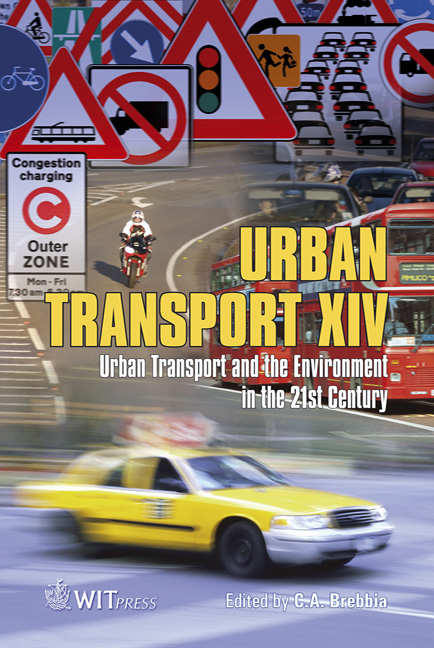Modelling Traffic In Detail With Mesoscopic Models: Opening Powerful New Possibilities For Traffic Analyses
Price
Free (open access)
Transaction
Volume
101
Pages
8
Page Range
659 - 666
Published
2008
Size
774 kb
Paper DOI
10.2495/UT080641
Copyright
WIT Press
Author(s)
T. Vorraa & A. Brignone
Abstract
This paper discusses this ‘new’ model type and uses a new development in the Cube transport planning software package, Cube Avenue, to exemplify how mesoscopic dynamic traffic assignment models can help model very congested areas to the required level of detail. Keywords: transportation planning, mesoscopic models, traffic congestion. 1 Introduction Transport modelling is mostly done on a strategic level often categorised as ‘macroscopic’ modelling. For traffic engineering and area traffic control/intelligent traffic management purposes, the ‘microscopic’ models have become very popular and useful. The macroscopic models can cover a very large area but their shortfall for detailed traffic planning purposes is their inability to model the required level of detail in congested areas. The microscopic simulation models traffic dynamically and captures this level of detail perfectly, but its shortfall is the inability to model route choice properly and it is also very limited in terms of model sizes. So, there is scope for a ‘mesoscopic’ modelling level that can handle the right level of detail for large study areas. Cube Avenue, an extension to the macroscopic planning module Cube Voyager, offers transportation professionals an innovative tool for analyzing traffic. With Cube Avenue, analysts can study problems for which traditional models don’t provide enough data and for which microscopic models provide too much data.
Keywords
transportation planning, mesoscopic models, traffic congestion.





